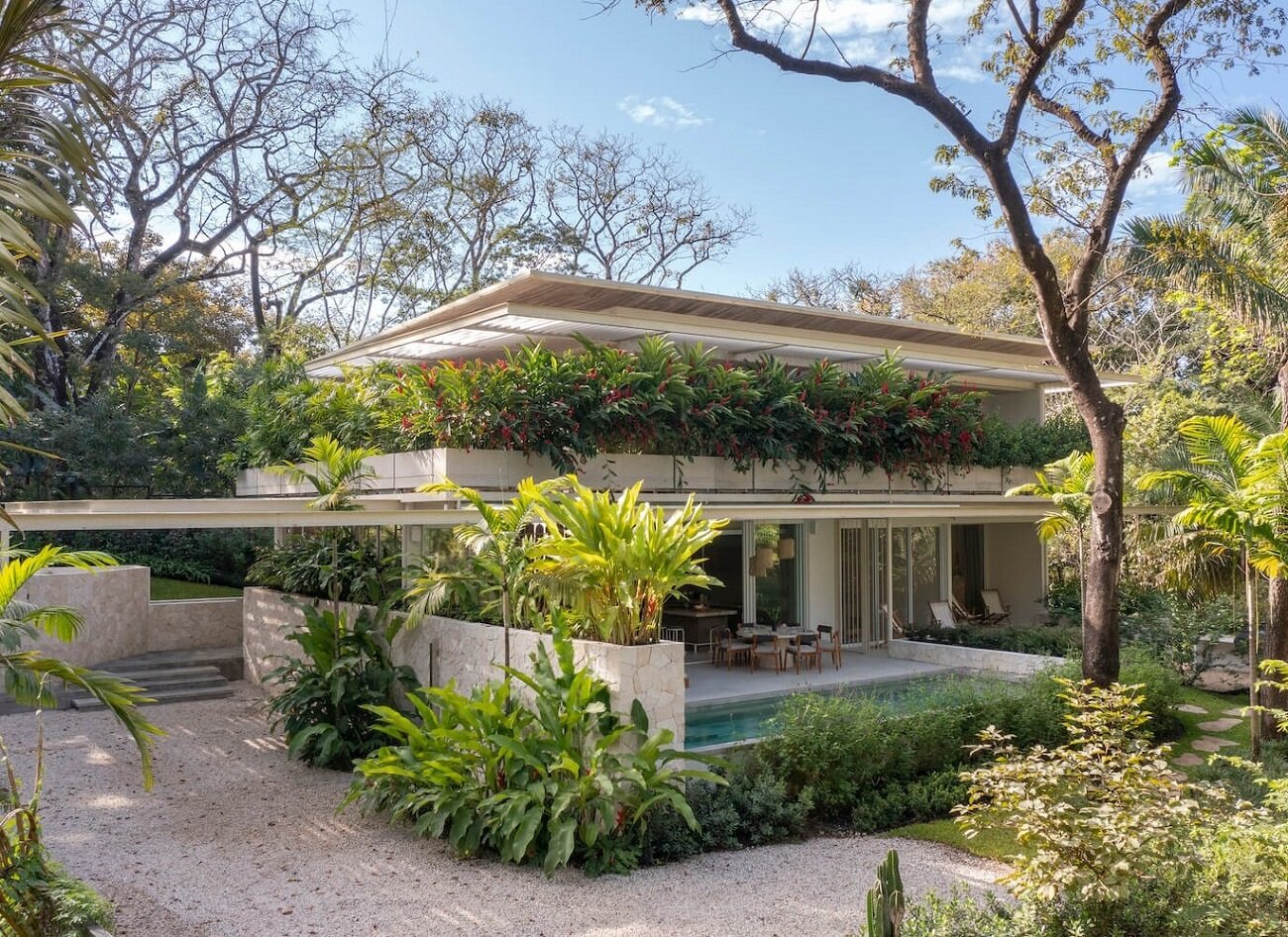#16875. Modern Tropical Facade with Integrated Greenery and Minimalist Aesthetics

This is an excellent example of contemporary tropical architecture, where minimalist facade design organically interacts with lush vegetation. The two-story structure features clean horizontal lines and a flat roof, characteristic of the modernist approach. Particularly noteworthy is the second floor with its projecting volume, framed by greenery that creates a "living" facade effect.
The building's facade is executed in light colors, which not only visually lightens the structure but also effectively reflects solar heat in the tropical climate. The lower level is maximally open thanks to large sliding glass doors that blur the boundary between interior and exterior spaces. This technique creates a sense of unity with the surrounding nature.
Structural elements made of light-colored stone form terraces and retaining walls, organizing the landscape around a small pool. This architectural object demonstrates how greenery can be effectively used as an architectural element when designing a facade – the plants on the second floor are not merely decoration but a functional part of the facade, providing natural shading and improving the microclimate.
When creating your own home in a similar style, it's worth paying attention to the ratio of open and closed spaces, the use of large-format glazing, and the integration of vegetation into the facade architecture. This approach not only ensures aesthetic appeal but also increases the energy efficiency of the building through natural shading and cooling.